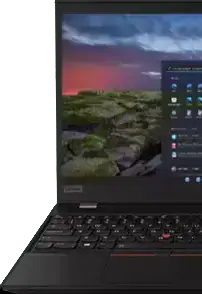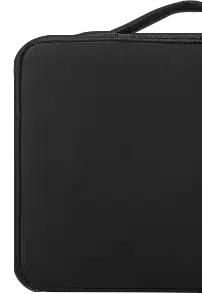What is dot slash?
In computing, "dot slash" refers to the "./" notation used in Unix-like operating systems to execute a script or a program that's in the current directory. The dot represents the current directory itself, and the slash is a directory separator. So, when you type "./" before a script name, you're telling the system to look for the script right here in the current folder, not anywhere in the system's path.
Does the dot slash only work on Unix or Linux®?
Yes, the dot slash convention is specific to Unix-like systems, which include Linux®, and other Unix derivatives. These systems use it to differentiate between executables in the current directory and executables located in the system path. It's not used in Windows, where you can run executables in the current directory without it.
Can I use dot slash for directories other than the current one?
If you want to execute a script or program in a directory other than the current one, you shouldn't use dot slash. Instead, you'd specify the path to the script. For example, to run a script located in a subdirectory called "scripts", you'd type "scripts/myscript" without the dot slash. Dot slash is specifically for something in the current directory.
What would happen if I didn't use dot slash in Unix systems?
If you don't prefix your command with "./" and the script or executable is in the current directory, the system won't execute it unless the current directory is in the path environment variable. Typically, for security reasons, the current directory isn't in the path, so you need to use dot slash to tell the shell explicitly to execute a program that’s right here.
Does dot slash have any significance in programming or script writing?
In programming, especially when writing shell scripts, you'll use dot slash when you want to execute another script or program from within the script you're writing. It's a way to ensure the called script runs from the current working directory. So, it's a significant convention to understand and use correctly when scripting in Unix-like environments.
What happens when I use dot slash with a file that's not executable?
If you try to use dot slash with a file that's not marked as executable, the system will give you an error, typically something like "permission denied". To run a file with dot slash, you need to make sure it has executed permissions, which you can set using the chmod command.
Can I use dot slash with relative paths?
Yes, you can use dot slash with relative paths. For instance, if you're in a directory and you want to run a script in a subdirectory, you would use dot slash followed by the relative path to the script. Like "./subdir/myscript". It's a way of saying "starting from the current directory, follow this path to find the executable".
Does dot slash have any use in web development?
While dot slash is commonly seen in Unix-based command-line operations, web developers might see it in paths for including files or resources like images, CSS, or JavaScript files. It tells the browser to request a resource relative to the current directory of the web page.
What if I see two dots and a slash in a path?
Two dots followed by a slash "../" represent the parent directory, not the current one. This is a relative path that tells the system to go up one directory level from the current directory. It's often used to access files or directories that are one level up in the hierarchy from where you currently are.
When would I not want to use dot slash?
You wouldn't use dot slash when you're executing a command that's located somewhere in your system's path. System commands like "ls", "grep", or "cd" don't require "./" because they're typically found in directories that are already in the path environment variable, so the shell knows where to find them.
Could using dot slash be different in scripts compared to interactive shells?
When you're working in an interactive shell, using dot slash is a manual way to execute programs in the current directory. In scripts, you might use it to ensure that the programs or scripts you're calling are executed from a known location, reducing the risk of accidentally running the wrong program due to a path issue.
What is the difference between using dot slash and just the file name?
Using just the file name without dot slash relies on the system's path to locate the executable. If the file is in a directory that's in your path, you can call it directly. Dot slash explicitly tells the system to bypass the path and look in the current directory, which is essential if the current directory is not in the path.
Can I use dot slash in file paths for any type of file?
Dot slash is typically used for executing scripts or binaries. However, it can also be used for referencing any file type when you're providing a path for operations like opening a file in an application. It denotes that the path provided starts from the current directory, whether it's for executing, opening, or otherwise accessing the file.
Is dot slash needed, if I use a graphical interface?
In graphical interfaces, you typically don't use dot slash. You'd execute files by clicking on them or using other graphical tools. Dot slash is a command-line concept, and most graphical interfaces take care of the path context for you behind the scenes.
Can I set a script to always run with dot slash somehow?
You cannot set a script to always run with dot slash inherently. Each time you want to run it from the command line in the current directory, you'll need to use dot slash. However, you could create an alias or a shell function that includes the dot slash or add a symbolic link to a directory in your path if you need frequent access.
Would dot slash be useful in setting up environment variables?
Dot slash isn't typically used in setting up environment variables directly. Environment variables are set to paths that are often absolutely consistent across different directories. However, when working with scripts that set environment variables, you might use dot slash to execute those scripts from the current directory.
Can dot slash be used with environment variables in paths?
Environment variables can be used in paths, but they're typically used to specify absolute paths that don't change with the current directory. You could theoretically concatenate an environment variable with a dot slash in a script, but this would be unconventional and could lead to confusion or errors.






